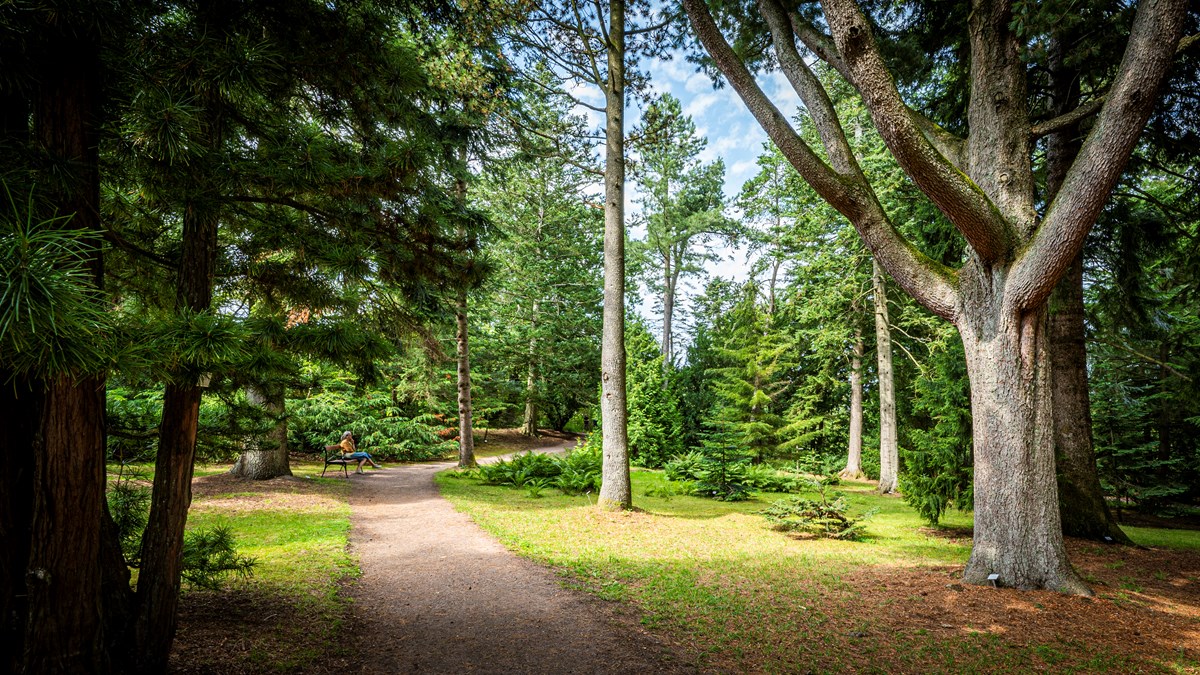Conifers

The first conifers appeared about 300 million years ago. They were the dominant vegetation on earth during the Cretaceous, Jurassic and Triassic periods (c. 250–65 million years ago). Even today, conifers can be found more or less all over the world. In the Swedish forests they are mostly firs and pines. They provide timber and paper and are there-fore of great economic importance.
Ancient conifers
Conifers and deciduous trees have developed different solutions to survive the winter. The shape of the needles offers less surface area than leaves. Needles also have internal support tissues and an external protective layer. They have low water content and a ”frost protection liquid”. Taken together, these factors enable needles to survive the winter without drying out or getting frostbite.
I the Pinetum stands a giant redwood (Sequoiadendron giganteum). It only grows wild in eastern California in the USA. It can grow to be 90 metres tall there and live to at least 3,000 years old. It is one of the world’s tallest trees. In our much harsher climate, it never reaches that height or age. Other interesting species are the Serbian spruce (Picea omorika) with its soft, non-prickly needles, and the stately giant cedar (Thuja plicata), planted here in 1916.
Attractions
The Japanese umbrella-pine (Sciadopitys verticillata) is not a pine at all but even so one of the world’s oldest still-living conifers. The oldest fossil of this tree is more than 200 million years old. Nowadays this is an endangered species since it only grows wild in small area of Japan.
The dawn redwood (Metasequoia glyptostroboides) was discovered in the 1940s in a distant valley in China. Earlier, the species was described as a fossil and deemed extinct. Like the European larch, it loses its needles in winter.
The Nikko fir (Abies homolepis) belongs to the genus fir. This tree was planted here in 1918. It is named after the town of Nikko in Japan where it grows wild.






